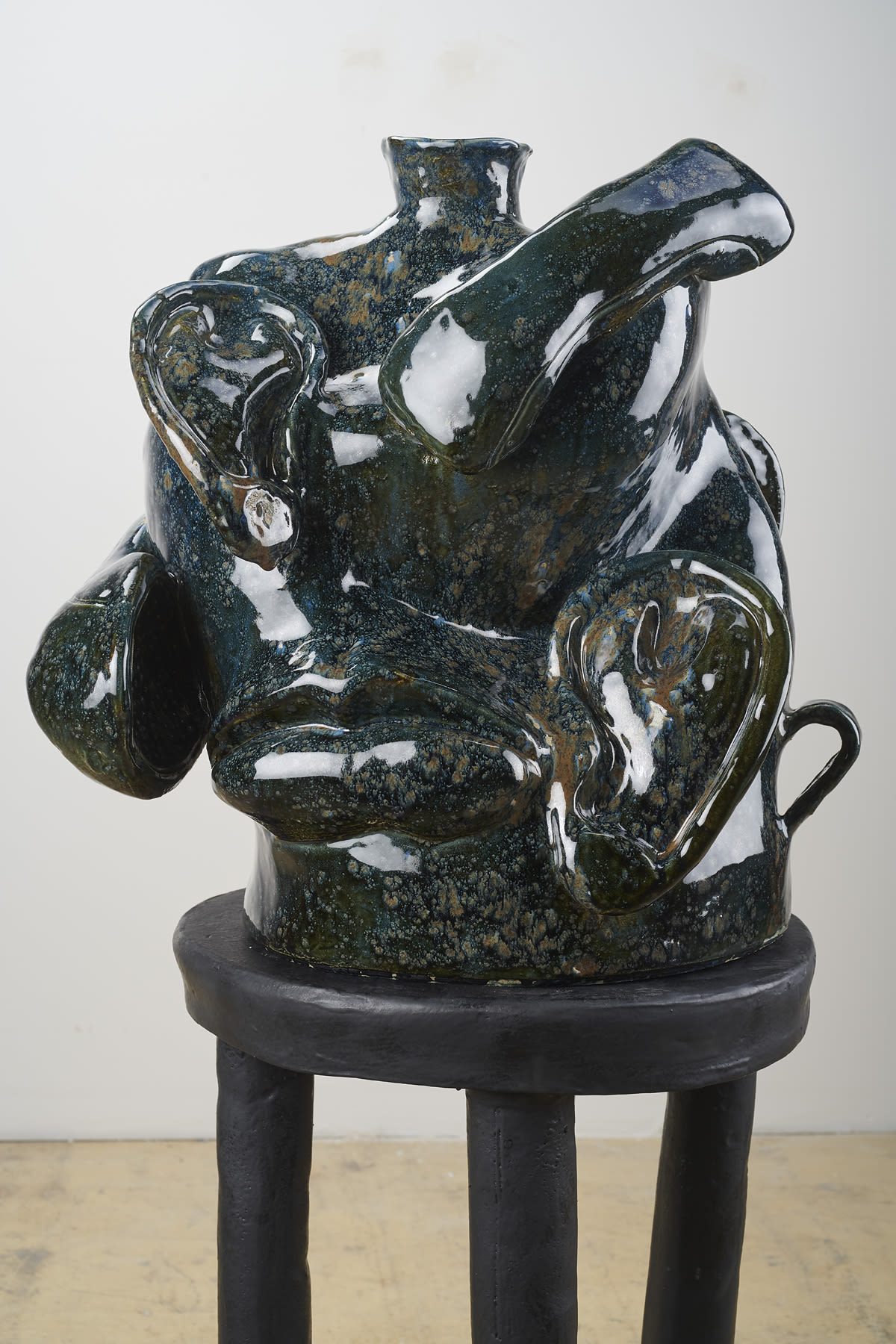

The score’s overlapping tracks are punctuated by a range of soft, electronically mixed, ASMR-like sounds-slow breathing, static crackling, birds chirping, and paper rustling-some of which emanate from the vessels themselves. Extending the immersive qualities of the wall paint and sculpted pedestals, Othello commissioned Cheflee, an Oakland-based musician, to compose a soothing soundscape inspired by the works. While the surfaces of Othello’s works draw attention to the interface between artist and material, their installation insists on linking the space of the artwork to that of the viewer. There, he made almost all of the works for the exhibition by abandoning the slip-casting technique, returning to the use of stone clay, and converting the Kohler molds into press molds (in which the clay is pushed into the mold rather than poured), his choices favoring flexibility, uncertainty, and the variation of both materials and process. When his residency was cut short because of the pandemic, Othello returned to Oakland, California, where he lives. Here, the three slip-cast bases appear texturally distinct: Their surfaces are smoother and more viscous, their color more uniform. Though each sculpture comprises a pedestal and a vessel, these elements are made separately. The method can be seen in just three of the works included in the exhibition: the sculptural pedestals comprised of brick-like forms stacked, somewhat precariously, as in a game of Jenga. That Othello foregrounds such haptic qualities invites questions about his relationship to Kohler’s industrial facilities: What happens when an artist who relishes the unpredictable, back-and-forth interface between artist body and clay body encounters processes designed to streamline mass production and minimize irregularity?ĭuring his residency, Othello experimented for the first time with slip casting, a technique in which liquefied clay (in this case, vitreous china) is poured into a plaster mold and left to form a thin, skin-like layer, the cast. While many of the sculptures explicitly refer to intimate forms of tactile embrace-hands clasp other hands or caress the surface of the vessel body- all of them imply tactility through their irregularly modeled surfaces, indexes of the artist working the clay. In Openness, hands resemble feet, arms become legs, and the head itself is absent, implied only by the inclusion of a pair of ceramic headphones perched as if slung over a shoulder. Elsewhere, Othello executes this effect by displacing body parts: In Sealed, a pair of side-by-side ears perched above a set of pursed lips substitute sound for sight. In Starting Off (all works 2021), for example, the exterior forms-a coffee mug and the two hands cupping it-evoke both taste and touch, while the interior cavity, filled with partially burned wax candles, emits an imaginary smell. Sometimes Othello evokes nonvisual senses through the inclusion of actual or sculpted objects. Yet their fleshy protrusions-lips, ears, noses, and hands-assert other modes of sensual consumption. With their glossy, iridescent, and vivid glazes, their surfaces are visually striking. As the title of the show suggests, these corporeal objects are infused with a prophetic force that radiates through space. The works and their carefully considered installation insist on an awareness of one’s body as a sensory vessel, and of the clay vessels themselves as animate, even spiritual things. Othello is a ceramicist who places experimentation with materials and processes at the heart of his practice, so the residency was a natural fit. Othello made them from molds he produced during his Kohler Arts Center arts/industry pottery residency, which provided him unusual access to the industrial-scale kilns (and high-quality clays and glazes) of the Kohler Company, a manufacturing firm best known for the production of porcelain bathroom fixtures such as sinks, bathtubs, and toilets. The sculptures are anthropomorphic forms featuring a smattering of bodily appendages. Seventeen vessels displayed on custom pedestals-almost all ceramic-are installed across six rooms with brightly painted walls: the first a French blue and the rest a glowing marigold.

For his solo exhibition “Hope Omens,” Woody De Othello has transformed John Michael Kohler’s Victorian Italianate parlor home into a sensuous, colorful sanctuary.


 0 kommentar(er)
0 kommentar(er)
